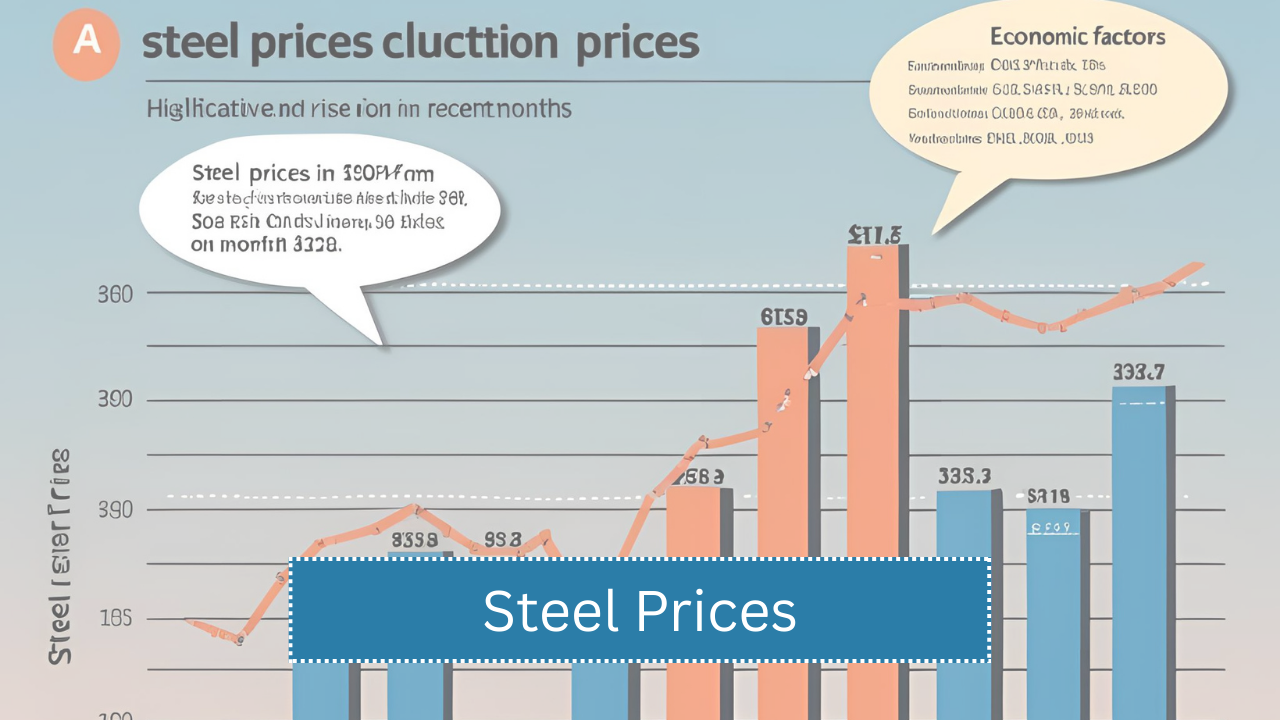Rising energy costs have become a major concern in the global economy. One of the industries most affected by this trend is the steel industry. Steel production depends heavily on energy sources like coal, electricity, and natural gas. When the prices of these energy sources rise, the cost of producing steel also increases. This article explores how higher energy prices are affecting steel prices worldwide and what it means for producers, consumers, and economies.
Energy: A Core Element in Steel Production
Energy plays a central role in steelmaking. Whether steel is made using the blast furnace–basic oxygen furnace (BF–BOF) method or the electric arc furnace (EAF) method, large amounts of energy are required to melt and refine the raw materials.
- In the BF–BOF method, coal and coke are the primary sources of energy.
- In the EAF method, electricity, often generated using natural gas or coal, is the main input.
Any increase in energy prices directly affects the cost of steel production.
Key Energy Sources Used in Steel Production
| Energy Source | Use in Steelmaking | Impact of Price Increase |
|---|---|---|
| Coal | Used in blast furnaces as fuel and reductant | Raises cost of pig iron and crude steel |
| Electricity | Powers electric arc furnaces | Increases cost of recycling steel |
| Natural Gas | Used in direct reduced iron (DRI) production | Raises cost of gas-based steelmaking |
| Fuel Oil | Used in heating and transport operations | Raises operational and transport expenses |
Recent Trends in Energy Prices
In recent years, global energy prices have risen sharply. Several factors are responsible:
- Geopolitical tensions (e.g., Russia-Ukraine war)
- Post-pandemic recovery, which caused higher energy demand
- Transition to renewable energy, which reduced investments in fossil fuels
- Supply chain disruptions in energy transportation
These factors have made coal, natural gas, and electricity significantly more expensive, especially in Europe and Asia.
Impact on Steel Prices: A Direct Correlation
As energy prices go up, steel prices follow. Producers pass their higher costs onto consumers. Steel is used in many industries such as construction, automobiles, shipbuilding, and infrastructure. So, rising steel prices can affect entire economies.
| Year | Average Energy Cost (Global Index) | Global Steel Price (USD per ton) |
|---|---|---|
| 2020 | 100 | 520 |
| 2021 | 135 | 720 |
| 2022 | 160 | 880 |
| 2023 | 155 | 820 |
| 2024 | 170 | 890 |
Note: These are representative average estimates.
Regional Differences in Impact
Energy prices vary from one region to another. For example:
- Europe has seen the sharpest rise in electricity and gas prices due to its dependence on Russian energy.
- Asia, especially India and China, relies on coal, so rising coal prices have hurt production costs.
- The U.S., with relatively stable energy supply, has seen moderate increases in steel prices.
| Region | Main Energy Source | Change in Energy Cost (2020–2024) | Effect on Steel Prices |
|---|---|---|---|
| Europe | Natural Gas, Electricity | +70% | Steel prices rose over 60% |
| Asia | Coal | +60% | Steel prices rose 50%+ |
| USA | Natural Gas, Coal | +35% | Steel prices rose 30%+ |
Industries Affected by High Steel Prices
Many industries depend on steel as a basic material. Rising steel prices increase their production costs, leading to higher prices for final products.
| Industry | Use of Steel | Impact of Higher Steel Costs |
|---|---|---|
| Construction | Beams, rods, rebar, frames | Higher cost of buildings and infrastructure |
| Automotive | Car bodies, engines, frames | Increases vehicle prices and reduces profits |
| Manufacturing | Machinery, tools, storage systems | Raises capital equipment costs |
| Energy & Power | Wind towers, pipelines, power stations | Raises cost of new energy projects |
Challenges for Steel Producers
Rising energy costs create several challenges for steel manufacturers:
- Lower profit margins due to higher input costs
- Increased operational costs from running furnaces and equipment
- Difficulty in price control due to global competition
- Pressure to upgrade to more energy-efficient technologies
Producers are forced to either increase prices or reduce production, both of which can hurt their market share and growth.
Strategies to Reduce Energy Dependence
To combat rising energy costs, steelmakers are trying various strategies:
- Switching to renewable energy (solar, wind)
- Using energy-efficient equipment
- Investing in hydrogen-based steelmaking
- Recycling scrap metal more efficiently
- Digital monitoring to reduce waste
However, these solutions often require heavy initial investment and long-term planning.
The Role of Government Policies
Governments play a crucial role in balancing energy and steel pricing. Some steps include:
- Offering subsidies for energy to critical industries
- Imposing price caps on energy during crises
- Investing in domestic energy production
- Encouraging green steel production through tax breaks
Such measures can soften the blow of rising energy costs and protect steel prices from sudden surges.
Future Outlook
Energy prices are likely to remain high due to continued demand and limited supply of fossil fuels. As the world transitions to clean energy, steelmakers will need to adapt. Prices of steel will likely stay volatile, depending on how energy markets behave.
| Scenario | Energy Trend | Expected Steel Price Trend |
|---|---|---|
| Continued fossil fuel dependence | High energy prices | High and unstable |
| Shift to green energy | Stable long-term costs | Moderate with possible dips |
| Global conflict resolution | Lower fuel volatility | Gradual price stabilization |
Key Takeaways
Steel prices are closely linked to energy costs. As global energy prices rise, so do the costs of producing steel. This has far-reaching effects on multiple industries and economies. Steelmakers are under pressure to find new ways to cut energy usage or shift to more sustainable sources. Governments, too, have a role in managing this complex situation. The future of steel pricing will depend on how energy challenges are addressed and how well the industry adapts to changing global conditions.

